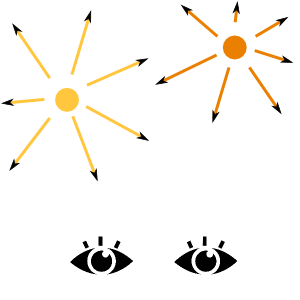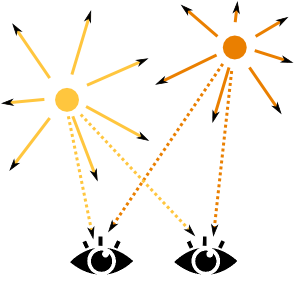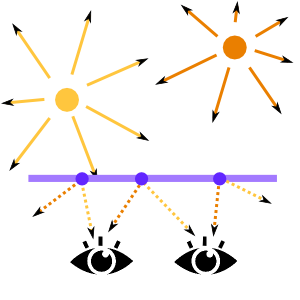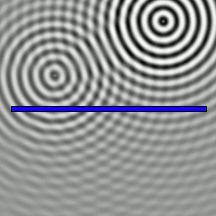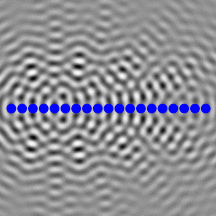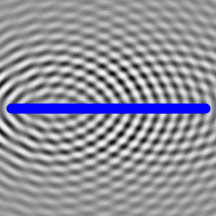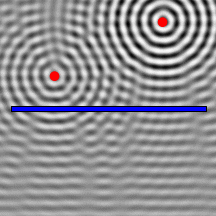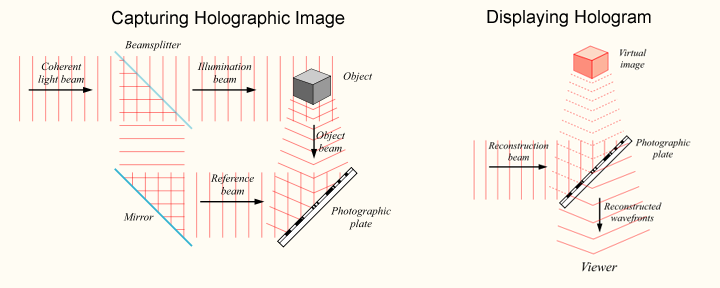The web started off with the simple idea of adding hyperlinks to words within text documents. The hyperlinks would let the reader to easily "jump" from one document or page to another, thus undermining the need to read the text sequentially, page by page, like a book. Suddenly, the information available to a computer user expanded from single documents into a whole network of disparate, interconnected pages. The old-school process of reading the pages in a fixed order became the process of browsing this network.
Hyperlinks could be added to the corresponding words by annotating these words with appropriate mark-up tags. For example, "this sentence" would become "this <a href="other_document">sentence</a>". This looked ugly on a text-only screen, hence browsers were soon born - applications, which could render such mark-up in a nicer way. And once you view your text through a special application which knows how to interpret mark-up (a serious advance back in the 90s), you do not have to limit yourself to only tagging your text with hyperlinks - text appearance (such as whether it should be bold, italic, large or small) could just as well be specified using the same kind of mark-up.
Fast-forward 25 years, most documents on the web consist nearly entirely of mark-up - some have nearly no text at all. The browsers now are extremely complex systems whose job goes way beyond turning hyperlinks into underlined words. They run code, display graphics and show videos. The web experience becomes more graphical and interactive with each year.
There is one area, however, that the web has not yet fully embraced - 3D graphics. First attempts to enrich the web experience with 3D go back as far as 94, when VRML was born. It picked some traction in the scientific community - projects were made which used VRML to, say, visualize molecules. Unfortunately, the common web developers of the time mostly regarded VRML as an arcane technology irrelevant to their tasks, and the layman user would not care to install a heavyweight VRML plug-in in order to view a molecule in the browser. Now, if it were possible to make, say, an addictive 3D shooter game with VRML, things would probably be different - a critical mass of users would be tempted to install the plug-in to play the game, and the developers would become tempted to learn the arcane tech to develop a selling product for that critical mass. Apparently, no selling games were created with VRML.
It took about fifteen years for the browsers to develop native support for 3D rendering technology. It is now indeed possible to create addictive 3D games, which run in the browser. And although a whole market for in-browser 3D applications has been born, the common web developer of our time still regards 3D as an arcane technology irrelevant to their tasks. It requires writing code in an unfamiliar API and it does not seem to interoperate with the rest of your webpage well. The successors of VRML still look like rather niche products for the specialized audience.
I have recently discovered the A-Frame project and I have a feeling that this might finally bring 3D into the web as a truly common primitive. It interoperates smoothly with HTML and Javascript, it works out of the box on most browsers, it supports 3D virtual reality headsets, and it relies on an extremely intuitive Entity-Component approach to modeling (just like the Unity game engine, if you know what that means). Let me show you by example what I mean:
<a-scene>
<a-cube color="#d22" rotation="0 13 0">
<a-animation attribute="position"
dur="1000"
easing="ease-in-out-quad"
direction="alternate"
to="0 2 0"
repeat="indefinite">
</a-animation>
</a-cube>
</a-scene>
This piece of markup can be included anywhere within your HTML page, you can use your favourite Javascript framework to add interactivity or even create the scene dynamically. You are not limited to any fixed set of entities or behaviours - adding new components is quite straightforward. The result seems to work on most browsers, even the mobile ones.
Of course, things are not perfect, A-Frame's version number is 0.2.0 at the moment, and there are some rough edges to be polished and components to be developed. None the less, the next time you need to include a visualization on your webpage, try using D3 with A-frame, for example. It's quite enjoyable and feels way more natural than any of the 3D-web technologies I've tried so far.
